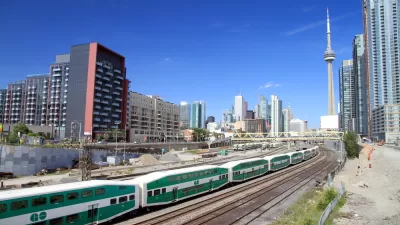A new zoning law in Toronto could enable its hundreds of suburban tower developments to become vibrant and active communities.

Cities all over the world need to take a close look at their suburbs. In many cases, low-density development correlates with a lack of transit and other infrastructure. Often, neighborhoods struggle to achieve the critical mass of human activity required for thriving small economies and healthy communities.
Many of Greater Toronto’s inner suburbs grapple with exactly these issues. But they are about to see dramatic change: a new zoning bylaw could mean that hundreds of neighborhoods go from being underused concrete deserts to vibrant communities, teeming with activity.
This creative approach to zoning provides an instructive case for urban areas in all parts of the globe.
The problem
Uniquely for a North American city, Toronto’s inner suburbs contain about two thousand towers. They currently house almost a million residents — about a sixth of the metropolitan area’s population. Until this point, zoning in these neighborhoods has made simple things like cafés, grocers, and community gardens illegal. This outmoded and highly restrictive policy has affected countless lives.
FULL STORY: How to rethink the suburbs: A lesson from Toronto

Planetizen Federal Action Tracker
A weekly monitor of how Trump’s orders and actions are impacting planners and planning in America.

Maui's Vacation Rental Debate Turns Ugly
Verbal attacks, misinformation campaigns and fistfights plague a high-stakes debate to convert thousands of vacation rentals into long-term housing.

Restaurant Patios Were a Pandemic Win — Why Were They so Hard to Keep?
Social distancing requirements and changes in travel patterns prompted cities to pilot new uses for street and sidewalk space. Then it got complicated.

In California Battle of Housing vs. Environment, Housing Just Won
A new state law significantly limits the power of CEQA, an environmental review law that served as a powerful tool for blocking new development.

Boulder Eliminates Parking Minimums Citywide
Officials estimate the cost of building a single underground parking space at up to $100,000.

Orange County, Florida Adopts Largest US “Sprawl Repair” Code
The ‘Orange Code’ seeks to rectify decades of sprawl-inducing, car-oriented development.
Urban Design for Planners 1: Software Tools
This six-course series explores essential urban design concepts using open source software and equips planners with the tools they need to participate fully in the urban design process.
Planning for Universal Design
Learn the tools for implementing Universal Design in planning regulations.
Heyer Gruel & Associates PA
JM Goldson LLC
Custer County Colorado
City of Camden Redevelopment Agency
City of Astoria
Transportation Research & Education Center (TREC) at Portland State University
Jefferson Parish Government
Camden Redevelopment Agency
City of Claremont





























